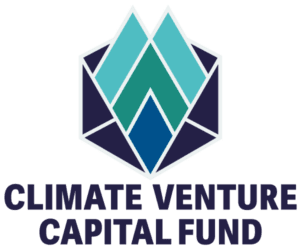The Climate Venture Capital Fund (CVCF) has a noble aim (emissions reductions) and meets strong ethical and governance standards. But it’s a small fund – tiny really – when you compare it to conventional funds or the scale of decarbonising the entire economy.
Can it be impactful as well as being small?
In a recent visit to Melbourne, Vincent Heeringa spoke to Dr Jodi York, Chief Impact Officer at Kilara Capital, and also the Chair of CVCF’s Climate Impact Committee. In a wide-ranging interview that’s published in Vincent’s podcast This Climate Business, they discussed the question of scale.
Vincent: We’re very proud of launching CVCF, but impact is also about achieving volume and scale, right? Both CVCF and Kilara’s VC funds are small. Are we at the beginning of something that looks like a hockey stick or is this going to be difficult and small for a long time?
Jodi: As nerdy as this sounds, I follow the development of reporting standards pretty closely because it’s things like the accounting and the insurance companies that are really going to change a lot of this. They control whether the money moves or it doesn’t move.

There’s a couple things going on that are being led in the European market, but they’re bubbling up now all over the place. One is the development of sustainable finance taxonomies, just like the way we have taxonomies for plants and animals. You can be a dandelion or a marigold, but you can’t be both. You’ve to have a genus and species and fit in one box. This is influencing the way that investors are dividing their portfolios … not just what they invest in, but in how and in what combination. So they might say that ‘yes, this might be regarded as ‘green’, but only if it does not include these other things that are specified.’
So the definition of what is classed as green or ethical or even ESG is narrowing?
Yes, and that leads to the second thing: enforcement. So ASIC and a lot of other regulators are now coming down on greenwash on the basis of this taxonomy. That means that investors will start to do the same things.
But how does that change scale and impact? Best-dressed gets the prize?
Yes, if you’ve got a robust reporting methodology and you’ve got transparency, you are now the shiniest apple in the tree. If people up the [investor] food chain from you are going to need to be doing that kind of reporting to their customers, then being able to show up and say, ‘if you buy this product or you invest in this thing, you’ve already got the reporting of that expenditure in all of the categories it needs to be in’. It’s an easy plug-and-play.
That’s why I get excited about the convergence of measurement systems and the frameworks that go with them.
So what you’re saying is that if you get the structure of your fund right, you will have the kind of behaviours and methods that demonstrate to the market that you are a responsible caretaker of money – whether it’s climate or some other category?
Yes, and that’s because you have designed this level of rigour from the get-go. You’ve got a system, you slot things in, you know what you have to prioritise in terms of what’s going to be measured.
You know, by the time we onboard a company at CVCF there’s already been a significant investigation in terms of emissions, diversity, their ethical business practices and so on. And then you work with the company and figure out, well, what are their pain points? What are they trying to solve? What data do they need to reduce those? And you start working down from there. So by the time you present these companies to investors they are already meeting those taxonomic criteria I just outlined above.
The VC and impact funds that are doing this work now will find they are hugely attractive to those larger investors.
And the hockey stick begins!
That’s the idea!
Listen to the full interview here
